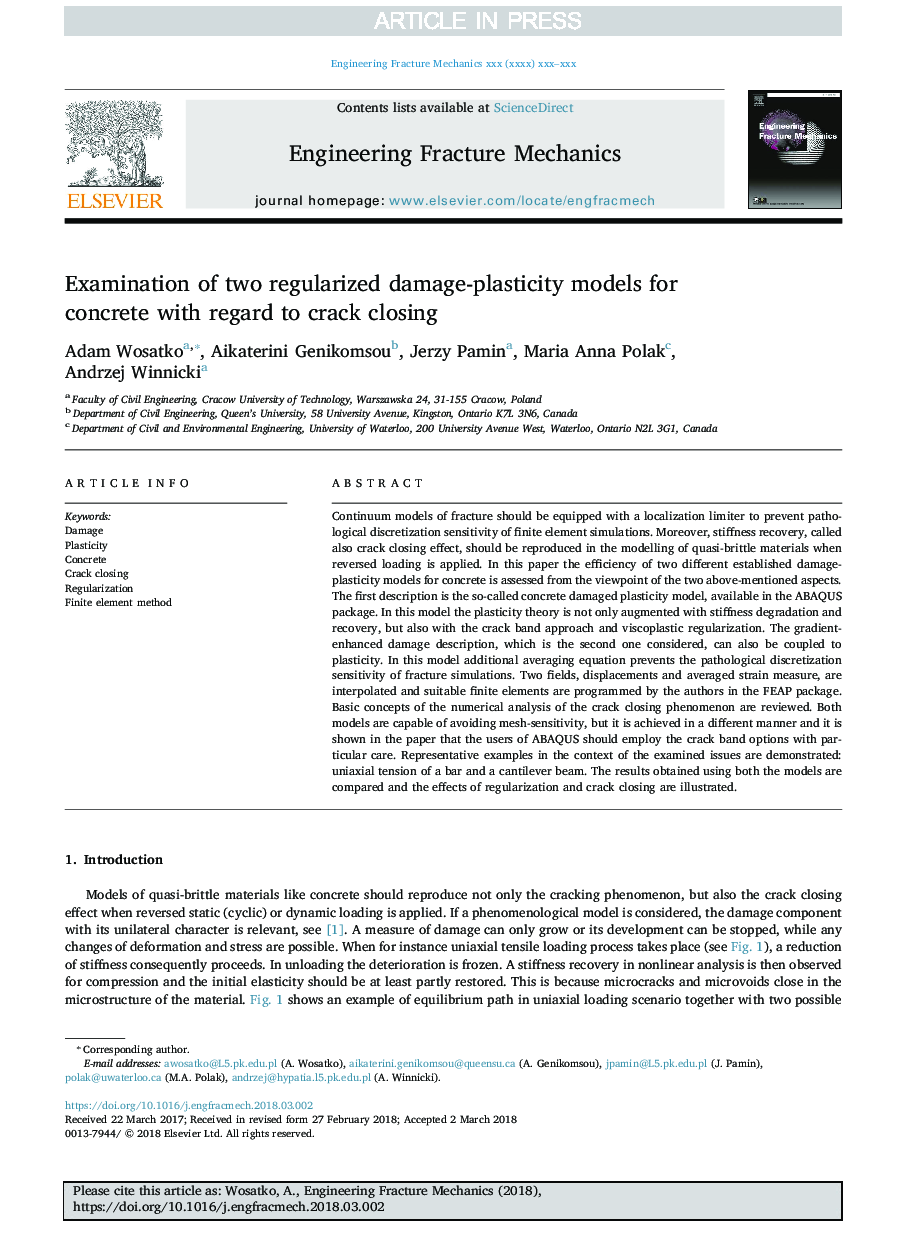| Article ID | Journal | Published Year | Pages | File Type |
|---|---|---|---|---|
| 7168884 | Engineering Fracture Mechanics | 2018 | 22 Pages |
Abstract
Continuum models of fracture should be equipped with a localization limiter to prevent pathological discretization sensitivity of finite element simulations. Moreover, stiffness recovery, called also crack closing effect, should be reproduced in the modelling of quasi-brittle materials when reversed loading is applied. In this paper the efficiency of two different established damage-plasticity models for concrete is assessed from the viewpoint of the two above-mentioned aspects. The first description is the so-called concrete damaged plasticity model, available in the ABAQUS package. In this model the plasticity theory is not only augmented with stiffness degradation and recovery, but also with the crack band approach and viscoplastic regularization. The gradient-enhanced damage description, which is the second one considered, can also be coupled to plasticity. In this model additional averaging equation prevents the pathological discretization sensitivity of fracture simulations. Two fields, displacements and averaged strain measure, are interpolated and suitable finite elements are programmed by the authors in the FEAP package. Basic concepts of the numerical analysis of the crack closing phenomenon are reviewed. Both models are capable of avoiding mesh-sensitivity, but it is achieved in a different manner and it is shown in the paper that the users of ABAQUS should employ the crack band options with particular care. Representative examples in the context of the examined issues are demonstrated: uniaxial tension of a bar and a cantilever beam. The results obtained using both the models are compared and the effects of regularization and crack closing are illustrated.
Related Topics
Physical Sciences and Engineering
Engineering
Mechanical Engineering
Authors
Adam Wosatko, Aikaterini Genikomsou, Jerzy Pamin, Maria Anna Polak, Andrzej Winnicki,
